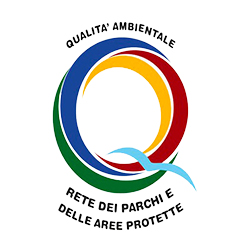Tour in the Asinara National Park by wheeled train or minivan
The trip includes a guided tour of the Asinara National Park on board vehicles authorized by the Park (wheeled train and/or minibus) with geo-marine environmental guides, exclusive to the Park, to discover the island: the human traces and history, the delicate balance of the marine world with its organisms, wild animals and their traces, vegetation.
Goals
- Stimulate curiosity, arouse historical interest in children and promote their wish to understand and know;
- Understand the importance of natural areas in which fauna finds the most suitable habitat;
- Perceive the environment as a collective asset;
- Know your area in order to learn to respect and protect it by perceiving the environment as a collective good;
- Learn about the geological, botanical, zoological and historical peculiarities of the Asinara National Park.
Route
Tour by wheeled train and/or minivan
- 10.30 – Departure from Stintino with the boat Ausonia (Tourist Pier Tanca Manna)
- 11.00 – Arrival at Fornelli, located in the southern part of the island, and transfer of the group on the Wheeled train and/or the minivan, guided by the Park’s exclusive geo-marine environmental guides, to discover the island. You will cover 25 km of cemented road towards Cala D’Oliva and back. Along the way you will make stops in the most important places of the island from a historical and naturalistic point of view. External visit of the Fornelli Maximum Security Prison.
- 11.30 – Panoramic viewpoint of Cala Sant’Andrea, a totally protected marine area, forbidden to visitors due to its significant naturalistic interest.
- 12.00 – Punta Sa Nave, western coast of remarkable importance for the presence of the paleoendemism Centaurea Horrida.
- 12.30 – Austro-Ungarico Ossuary, stop for swimming (optional) and external visit of the structure and Campu Perdu, with its characteristic white and grey donkeys and horses.
- 13.30 – Arrival to Cala Reale and visit the external of the ruins of the former Maritime Sanitary Station
- Lunch break at your own expense
- 14.30 – Departure to Cala D’Oliva, located in the northern part of the island. Visit of the village and of the Former Central Branch, nowadays Memory Observatory.
- 16.00 – Transfer to Fornelli.
- 18.00 – Return to Stintino.
Packed lunch.
Option:
- The price per person includes: 2 stuffed sandwiches, 1 liter of water, a piece of fruit, a fruit juice and a snack.
Optional additional activities:
- FarmAsinara, Officine Cosmetiche Asinara (cosmetic workshop), with a free bar of soap.
- Marine Animal Recovery Centre. Visit and activities at the Sea Turtle Recovery Center (hospital pool room; information room and veterinary clinic). Presentation of the sea turtle biology, in particular the Caretta Caretta specie. Simulation of first aid activities on a sea turtle specimen: first aid, biometric data collection.
- Marine Animal Recovery Centre; explanation (about 15 minutes) and visit to the pool room.
The program can be adapted and modified on demand and the price may vary accordingly.
We recommend using water bottles, comfortable shoes and dressing in layers.
Stops, timetables and tour methods may be subject to variations.
The departure of the boat and the timetables (round trip) may vary depending on the weather and sea conditions, at the discretion of the commander and do not depend on Sinuaria.






 Marine Protected Area “Asinara Island” (Isola dell’Asinara)
Marine Protected Area “Asinara Island” (Isola dell’Asinara)
